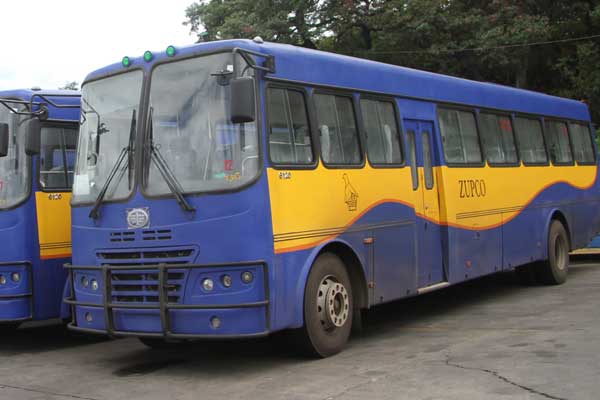Chenai Mutasa
The success of the recently launched urban transport system authenticate one of the late music icon, Oliver Mtukudzi’s song “Handiro Dambudziko,” which loosely translate to “that is not the actual problem” and talks about the need to investigate the root causes of a problem in order to solve it instead of trying to cure symptoms of same.
Had someone carried out a survey on the country’s urban transport system around 13 of January 2019, they could have easily come to the conclusion that the hikes in fuel prices were directly responsible for the exorbitant prices that were being charged by private commuter omnibus operators. Fast forward to a week later, the introduction of ZUPCO buses proved that private commuter omnibus operators could make a profit while charging $1 for a distance of less than 20km – they were simply profiteering.
Mtukudzi’s assertion can be adopted in solving the standoff between civil servants and Government regarding a cost of living adjustment. The workers are demanding a $1 733 salary for the least paid worker, up from $414 inclusive of allowances, arguing that their earnings have been eroded by the surge in prices experienced early this year. On the other had Government upped its initial $160 million offer to $300 million, which the workers rejected saying it was too little as it translated to about $78 for the lowest paid worker.
It is the case therefore that, while Government is looking at the total cost of a pay increase, its effect on the on the budget deficit and inflation, the workers are looking at how much will end up in their pockets. But what is the actual problem here? If Government pays hefty salaries, inflation will rise and erode the new salaries, which will see workers demanding more. On the other hand, as the situation stood before Government chipped in with the cushioning allowance, workers were having difficulties meeting costs such as rentals.
Therefore, the most feasible solution is for Government to provide non-monetary incentives that solve the actual problems faced by its workers. A good example being the provision of residential stands at affordable prices. Such a move will result in monies that were being spent by civil servants on rentals being directed to savings in the form of acquiring immovable assets. The building sector will also receive a boost as those with free funds will begin to construct their dwellings.
Another non-monetary incentive can come in the sense of free duty on cars imported by civil servants. Some might argue that such a move will result in the loss of much needed revenue by Government. On the contrary, Government stands to benefit more in fuel tax, toll gate fares, licensing fees, tax from spare parts retailers, PAYE from motor industry workers and job creation for the citizens in the motor industry. The same logic has been successively implemented by printer manufacturers who make more money from the sale of cartridges than the printers themselves.
Civil servants can also be considered in Government programmes such as Command Agriculture or the Presidential input scheme. Logic being that, a significant number of civil servants have rural homes or were beneficiaries of the land reform programme and if they plant 2 hectares per individual, they will be assured of sufficient food for the whole year, which in turn translates to the country being more food secure.
Payment in the form of benefits can also be done by allowing workers to take time off work, free or discounted parking, gym membership discounts, retirement plans, mentoring and tuition assistance, just to mention a few.
The cumulative effect of non-monetary incentives is that the civil servants’ standard of living will rise drastically, while inflation and the budget deficit remain low as Government will not have to fork out large sums of money paying hefty salaries. This will enable Government to channel that money to investments that will create more jobs, thereby uplifting the standard of living of the whole nation.




